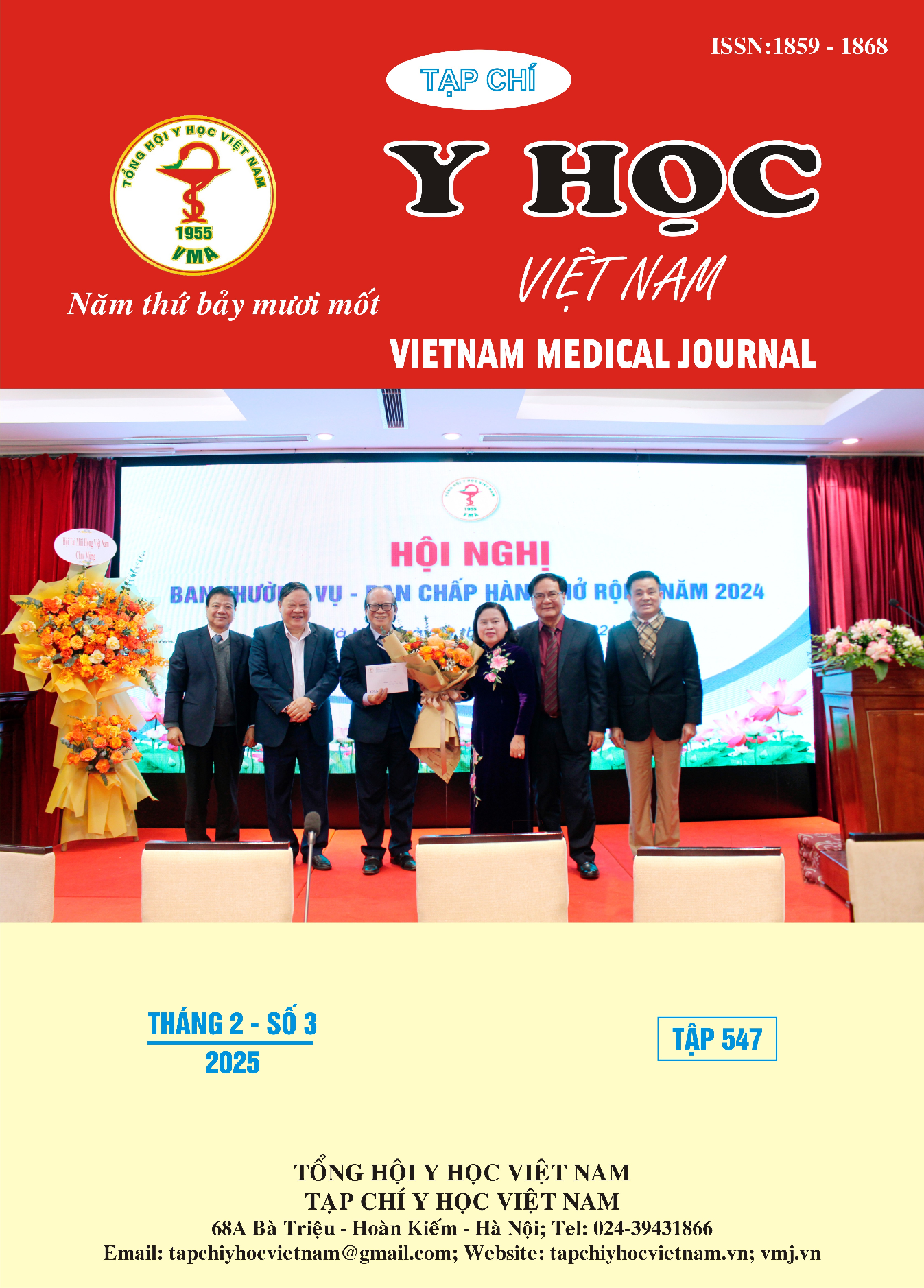OUTCOMES OF SPONTANEOUS EPIDURAL HEMATOMA TREATMENT AT VIET DUC UNIVERSITY HOSPITAL
Main Article Content
Abstract
Objective: To describe the clinical characteristics, imaging findings, and treatment outcomes of spontaneous epidural hematoma at Viet Duc University Hospital. Methods: A retrospective descriptive study of case series of patients diagnosed with spontaneous epidural hematoma treated at Viet Duc University Hospital from March 2022 to March 2024. Results: Fourteen patients were included, with a male-to-female ratio of 2.5:1 and a mean age of 47.1 years (ranging from 15 to 88). Three patients (14.3%) had coagulopathy at admission, one of whom (7.1%) was on anticoagulant therapy. Thirteen patients (92.9%) presented with neck or back pain. All patients exhibited neurological deficits, with six patients being complete spinal cord injury (AIS A) and eight incomplete injury (AIS B/C). The majority of hematomas were located in the thoracic spine (50%) and posterior to the spinal cord (71.4%). The average length of the hematoma was 62.0 ± 39.2 mm, and the average width was 13.2 ± 16.0 mm. Thirteen cases (92.9%) underwent surgical decompression, while one case was treated conservatively (7.1%). Among the surgical cases, 84.6% showed improvement in neurological function. Complications occurred in one case (7.7%) involving superficial infection, and one patient (7.7%) died one month post-surgery due to pneumonia. Conclusion: Surgical treatment is the primary choice for cases with severe neurological deficits. Overall surgical outcomes are favorable; however, attention should be given to prognostic factors for appropriate indications.
Article Details
Keywords
hematoma, epidural, spinal cord compression, spontaneous
References
2. Kim KT, Cho DC, Ahn SW, Kang SH. Epidural Hematoma Related with Low-Dose Aspirin : Complete Recovery without Surgical Treatment. J Korean Neurosurg Soc. 2012;51(5):308. doi:10. 3340/jkns.2012.51.5.308
3. Bhat K, Kapoor S, Watali Y, Sharma J. Spontaneous epidural hematoma of spine associated with clopidogrel: A case study and review of the literature. Asian J Neurosurg. 2015; 10(01): 54-54. doi:10.4103/1793-5482. 151521
4. Domenicucci M, Mancarella C, Santoro G, et al. Spinal epidural hematomas: personal experience and literature review of more than 1000 cases. J Neurosurg Spine. 2017;27(2):198-208. doi:10.3171/2016.12.SPINE15475
5. Peng D, Yan M, Liu T, et al. Prognostic Factors and Treatments Efficacy in Spontaneous Spinal Epidural Hematoma: A Multicenter Retrospective Study. Neurology. 2022;99(8):e843-e850. doi:10. 1212/WNL.0000000000200844
6. Yu JX, Liu J, He C, et al. Spontaneous Spinal Epidural Hematoma: A Study of 55 Cases Focused on the Etiology and Treatment Strategy. World Neurosurg. 2017;98: 546-554. doi:10.1016/ j.wneu.2016.11.077
7. Moller H, Schramm J, Roggendorf W, Brock M. Vascular malformations as a cause of spontaneous spinal epidural haematoma. Acta Neurochir (Wien). 1982;62(3-4): 297-305. doi:10. 1007/BF01403637
8. Groen RJM, Ponssen H. The spontaneous spinal epidural hematoma. J Neurol Sci. 1990; 98(2-3): 121-138. doi:10.1016/0022-510X (90)90253-J
9. Gala FB, Aswani Y. Imaging in spinal posterior epidural space lesions: A pictorial essay. Indian J Radiol Imaging. 2016;26(03): 299-315. doi:10. 4103/0971-3026.190406
10. Groen RJM, Grobbelaar M, Muller CJF, et al. Morphology of the human internal vertebral venous plexus: A cadaver study after latex injection in the 21-25-week fetus. Clin Anat. 2005;18(6):397-403. doi:10.1002/ca.20153


